It's been a few months since I last spoke about the Light Utility Vehicle project officially. I've thrown some things in the newsletter, but for the most part, I've kept myself away from discussing it.
I'm always surprised that such a relatively simple and uninspiring project gets so much attention from folks. At least three times a week I'm asked to discuss the project in some form. I guess people really love the idea of a G-Wagon replacement.
The project, at least on the public side, has been fairly quiet this year. There have been no updates, no documents, and certainly no hype from anyone. It isn't considered a major priority to most in leadership and is seemingly content existing as is.
Of course, you aren't here for the public stuff, and behind the scenes, the project has been active in trying to get things done. This includes some major additions. So ahead of any potential documents dropping, let's talk about the LUV project again.
LUV Recap
To quickly recap, the Light Utility Vehicle (LUV) project aims to replace the current fleet of G-Wagons and Milverado with two new classes of vehicle, broken down into two separate phases: LUV-Light and LUV-Heavy respectively.
The LUV-Light will replace the Milverado with \~425 COTS vehicles. These will essentially be crew cabs with little actual militarization. This will be done through a Standing Offer (SO) to be released this year.
A Standing Offer is a pre-negotiated agreement between the government and a supplier, which establishes the terms and conditions for future purchases of goods or services over a set period.
It doesn’t guarantee any specific orders but allows the government to procure these items quickly when needed, under the agreed-upon pricing, terms, and conditions.
Originally, suppliers were asked for solutions that could provide for both categories. However, this was seen as too restrictive, and most of the qualified suppliers did not have the solutions available to provide for LUV-L.
So, the choice was made last year to split the project into two phases, separating the requirements to allow proper room for suppliers in both categories.
LUV-Heavy remains relatively the same as it's always been. The aim is to acquire between 1500–1850 vehicles stretched across three variants: Command and Recce (C\&R), Utility Vehicle, and Military Police (MP), while a fourth, a Cable Laying vehicle, will fall under LUV-L.
These vehicles will fall more into the Protected Mobility Vehicle class of vehicles, with a minimum STANAG II ballistic/blast rating, a maximum speed of at least 110 km/h, and the ability to move at least four individuals along with their equipment.
From what I gather, there have been minimal changes to the minimum requirements as we discussed them before. They're fairly straightforward and simple and could be fulfilled by any number of vehicles on the market.
While most things on the project remain the same as our last update, that doesn't mean there haven't been changes. The biggest change of them all is that the qualified suppliers list has expanded in the last few months.
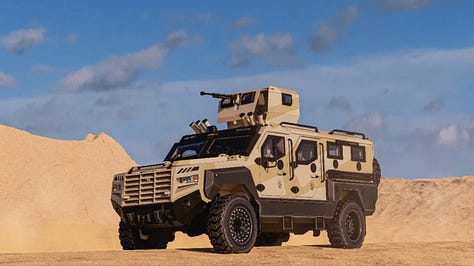
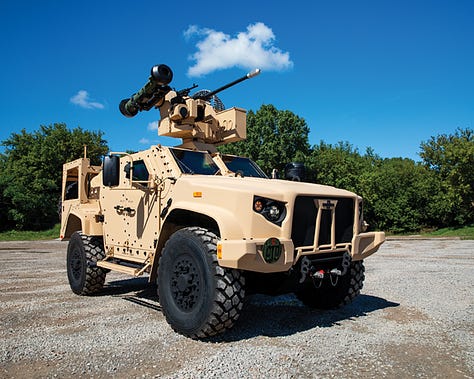
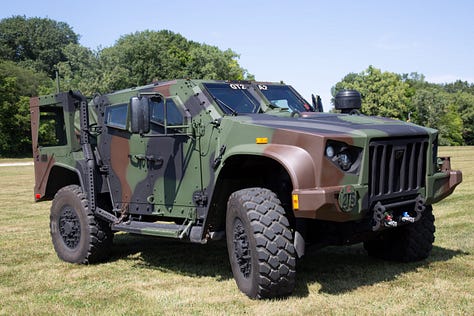
While LUV-L will be an open solicitation, LUV-H will be limited to a list of qualified suppliers. This list is the same that we had before the split and includes:
Roshel with the Senator SMP
AM General with the JLTV A2
Oshkosh with the JLTV
Armatec Survivability with something
They, however, will be joined by two new companies who were added to the qualified suppliers list: GM Defence and Terradyne.
These two were quietly added without any fanfare nor public acknowledgement, but I was able to get some confirmation on their inclusion recently. GM Defence was one of the surprising exclusions on the list last year.
Despite lacking a suitable option for LUV-H, the company did throw in their own LUV design for the lower end—a very nicely painted Silverado with a few QOL additions thrown on there.
Spectacular? No, but it wasn't meant to be. What better to replace your Silverado than more Silverado? At least that is the pitch GM threw out there. You can’t fault them for it—they made the clear path for replacement.
I won't say it's because of them that the project was split, but certainly, it was a factor. The exclusion of one of your main suppliers from a project that is trying to replace one of their own products is rarely a good sign, especially if it’s asking for basically the same thing.
They certainly spoke up against their exclusion, and certainly, they played a role. The funny thing is their inclusion now on the qualified suppliers list—which, to my knowledge, is only being used for LUV-H—suggests they'll be attempting to likely market the Next-Generation Tactical Vehicle for the requirements.
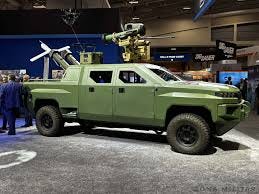
The Next-Generation Tactical Vehicle Hybrid is GM Defence’s latest concept—a heavily modified Chevrolet Silverado 3500HD ZR2 fitted with the 2.8L Duramax® turbo-diesel engine and a 12-module battery pack. Offering a total energy output of 300 kWh, the NGTV-H has been positioned as an evolution upon the original LUV platform, and GM Defence's future utility platform.
It isn’t necessarily the first time I've heard the platform discussed as an offering. GM has thrown it out to several countries in Europe and the Middle East this year, and it can meet the STANAG II demands with add-on armour, as well as the 500 km range requirement.
The vehicle itself is still a concept and should not be confused with a production vehicle. However, talking to people involved, the NGTV could be rapidly brought into production if an order came through.
It’s certainly the only vehicle that could fit that LUV-H category, so I'm fairly confident that it—or something like it—would be offered for LUV-H.
As for Terradyne, that’s a bit more surprising. They are not my first pick for something like this, and although the Gurkha—Terradyne’s premier product—has seen some success being exported to Ukraine in small numbers, I still very much question if the company is up to par here.
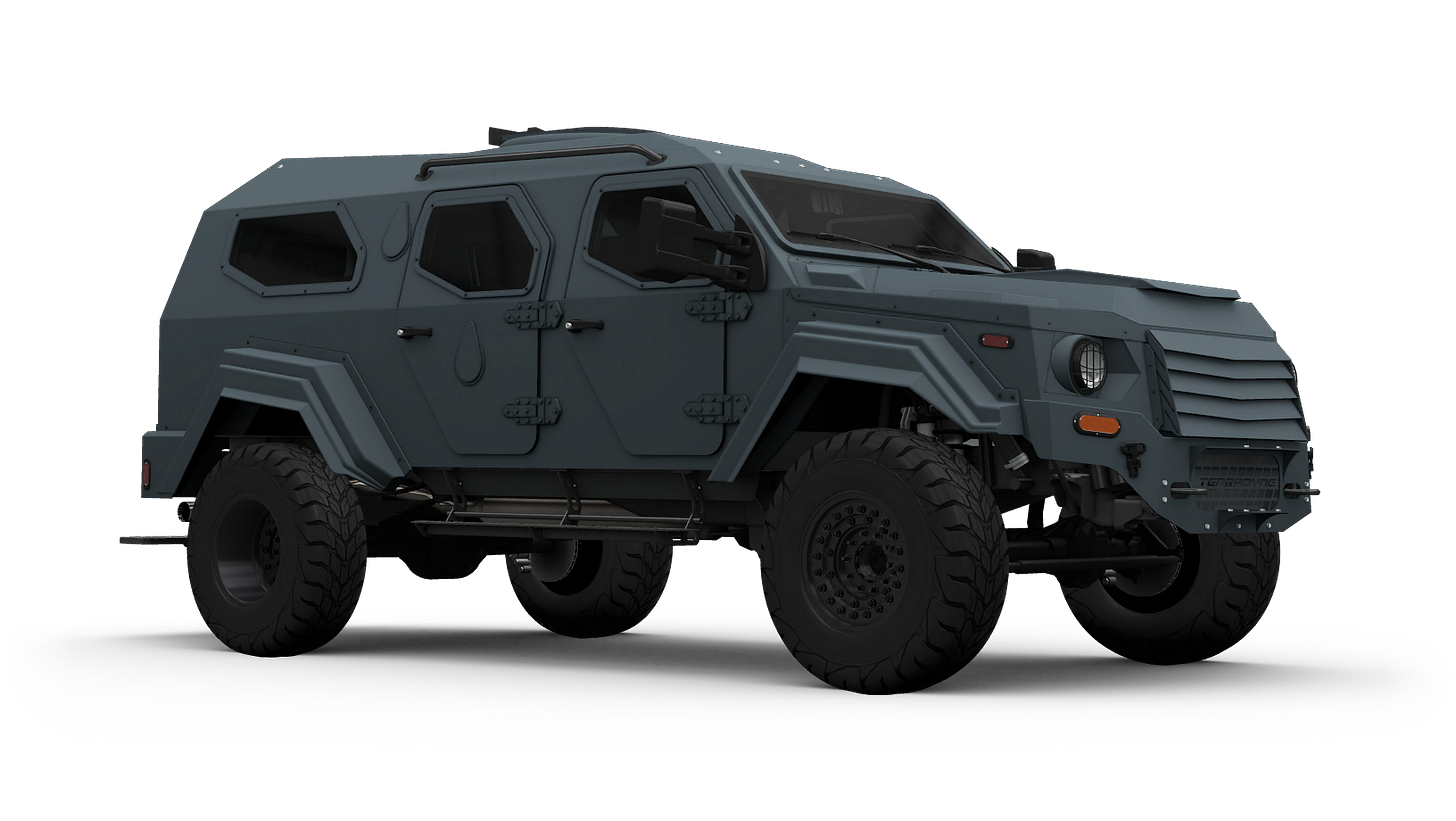
I did a whole piece on the history of Terradyne and the Gurkha before if you're curious, but the platform is very similar to the early Senators, both based off the F-550 and primarily designed for SWAT and internal security duties.
Maybe they've developed a variant that is more militarized? I don't know, but it’s very strange to imagine that they've made it past others out there.
For example, Cambli offers another 550-based vehicle in the Blackwolf that’s designed primarily for SWAT and internal security. Despite already being in service in CAF—both in a training role and in Latvia as a transport for the RBS-70NG—they failed to qualify.
It wasn't for lack of trying either, and I don’t want anyone to think I'm ragging on Terradyne here. I quite like the people there, but the inclusion of them seems a bit odd at first glance.
I don’t know why these inclusions haven’t been discussed, nor why there is an apprehensiveness to confirm them. I tried to ask through official channels but received no response at the time of this writing.
While we're here, I do want to address two questions that keep coming up.
Despite the tariffs and ongoing diplomatic row between us and the United States, both AM General and Oshkosh remain in the competition. Their status has not changed. However, I will say that both of their chances, as they stand, are unlikely.
That is because the current mentality has pushed for LUV to be a domestic deal—both in the DND and the wider government. The hope here is that LUV can provide the automotive industry—at least some people—with a stable contract to work on.
Obviously, these individual contracts wouldn't be enough, but they are among the larger government opportunities available at this time. On the other end of the spectrum, there is always a desire to expand our domestic supply, and that includes having a stable production line for armoured vehicles.
It makes little sense to get these kinds of vehicles outside Canada when we have domestic options available. That’s just a level of common sense that, at least I hope, many people understand.
For question two, I want to address the other frequent issue with LUV: the demands themselves. This is one I have heard quite a bit lately, and I think it needs to be addressed.
Many people seem to question what are seen as high demands from the LUV team when it comes to things like its protection level. Many see these as "too much" for what is supposed to be a Light Utility Vehicle.
This, of course, is ignoring that trends have seen almost every class of vehicle increase in size from previous generations, across almost every major country. This isn’t a trend exclusive to us.
Second, the demands for such a high protection rating have become even more prevalent in the last two years. The war in Ukraine has shown how vulnerable unarmoured vehicles can be, even beyond the front lines, where small drones can be prevalent for tens of miles behind where the fighting actually is.
The prevalence of such drones, combined with the expectation that we will be fighting a peer adversary with greater access to things such as high-calibre weaponry, rockets, and mines than your average insurgency, means that the lightly protected G-Wagon is no longer near a safe enough vehicle—even if it isn't expected to be a front-line asset.
This is the primary concern that almost everyone has, and why almost everyone else has moved into the PMV category of vehicles in recent years. The size of these vehicles is a necessary tradeoff to ensure that crews and occupants are protected in the modern battlespace.
That will upset some who stick to the old-school philosophy of what a Light Utility Vehicle is, but the fact remains that protecting the occupants inside the vehicle is the top priority. In an era of mass drone warfare, that necessitates a level of protection beyond what we have traditionally required.
As of right now, the plan is to drop both LUV-L and LUV-H in the fall, with LUV-L being awarded next year followed by LUV-H after. The timeline for LUV-H, sadly, still remains 2030 for IOC—a timeline I would like to see moved up.
Hopefully, then we will get to see where the last year of work has gone and get a better picture of how both these phases have evolved after a year of separation from each other.


We could realistically quadruple the LUV-L numbers and be much better off. The blue fleet are increasingly clapped out, and frankly our logistics situation is dire.
Outside of this contract, I like to see a research program, buying small batches (10-25) of Canadian made vehicles each year, for testing and issue to units as part of the test program. This will give the CAF an idea what is out there, what works and does not. The purchases and feedback, keeps the smaller companies going and growing, with the ability to sell overseas as well.
Also no vehicle in the CAF should be more than 15 years old. If we bought new vehicles every year, we don't need to buy large batches and we reduce maintenance needs.